by atmara | Sep 8, 2014 | Art, Mandala Monday, Mandalas, Sacred Geometry
This week I had planned to bring you more images from the new Flower of Life Mandalas I created this year. But first I thought it might be interesting to give you some information about this symbol. For that I have turned to an article by David Weitzman, whose beautiful jewelry was featured in another post titled Mondala Monday – Mandala Jewelry by the Artist David Weitzman – Guest Post.
I hope you enjoy David’s article, and come back next week to see the third set of Flower of Life Mandalas. To see more images of the symbols David writes about I recommend you see the Wikipedia article on the Flower of Life.
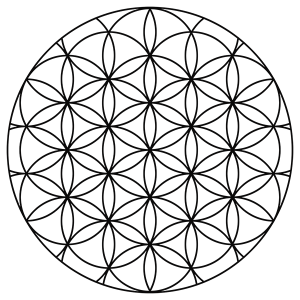
Flower of Life
Flower of Life Symbolism in Modern Art by David Weitzman
A sacred geometrical figure, the Flower of Life has been revered by practically all cultures and religions, ancient as well as modern. The figure is made of a number of overlapping circles that are placed in such a symmetrical hexagonal arrangement that it results in a flower-like pattern.
Though the pattern has been extensively used as a decorative motif, it is believed to have great spiritual significance. The Flower of Life contains several other famous geometric symbols within itself, including the Seed of Life, Egg of Life, Tree of Life and Fruit of Life. All these are considered to be symbols of Sacred Geometry in which geometric forms and numbers are accorded sacred meaning. Sacred Geometry is based on the belief that specific geometrical shapes carry particular spiritual and emotional implications. The Flower of Life is believed to contain patterns of creation, the building blocks that form the basis of molecules, cells and practically everything in this cosmos. The Seed of Life is considered to be a symbolic representation of the seven days of creation of the universe by the divine power, God. The Egg of Life is a structure that is considered to be at the base of music as the distances between the circles in the pattern is same as that between the notes & half-notes in music.
The Flower of Life, which is one of the oldest revered symbols known to mankind, is found in art, manuscripts and architecture (especially temples) of different civilizations across the world. The oldest use of the symbol has been found in the Temple of Osiris at Abydos in Egypt. It is believed to be more than 6,000 years old. It has also been sighted in The Forbidden City and several temples in China. In India, the pattern has been found in the Golden Temple in Amritsar, temples at Ajanta and Hampi. Masada in Israel, Mount Sinai in Egypt, several ancient Roman sites in Turkey, and various temples in Japan are some other places where the Flower of Life has been seen. Italian art too has been observed to have made liberal use of the symbol.
The renowned artist, Leonardo da Vinci had based many of his works, including the famous Vitruvian Man on the Flower of Life. Even in the modern times, the symbol has continued to have mystic powers. Numerous modern day artists are engaged in creating works of art based on this pattern, believing it to be an eternal source of wisdom that holds the entire cosmic history and human consciousness within itself. There are many who have devoted themselves to the study of this symbol of sacred geometry and have derived emotional, mental and spiritual enlightenment from their pursuit.
The spiritual symbolism of the Flower of Life has also led to the use of this pattern in making jewelry pieces having healing benefits. Wearing this Flower of Life Pendant is considered to be helpful in connecting with the inner self, dissolving fears, creating sharper self-awareness and promoting a general sense of harmony and well-being. Considering its immense popularity, the symbol has even been generously used on posters, cards, prints, etc.
This deceptively simple Flower of Life pattern is symbolic of unity in diversity, and the inter-connectivity of everything that exists. Understanding it can help you discover your unlimited potential and connect with the divine power inside you.
About the Author:
My name is David Weitzman, and I’m a cosmic jewelry artisan. My biggest inspiration in jewelry design comes from the knowledge that with my art, I can touch the lives of people. My work takes the spiritual power of sacred symbols worldwide and geometry, to bring you to carry my sacred jewelry happiness, vitality, excitement and love. My jewels were painstakingly created to influence and consciously or unconsciously arouse inspiration in the lives of people.
Ka Gold Jewelry
Flower of Life
Flower of Life Pendant
Like this:
Like Loading...
by atmara | Jan 16, 2012 | Art, Mandala Monday, Mandalas, Sacred Geometry
What is a talisman?
The word “Talisman,” derived from the Greek verb “teleo,” means, primarily, to accomplish, or bring into effect. The Talisman is an object marked with magic signs and is believed to confer on its bearer supernatural powers or protection. Virtually every religion in human history has offered as adherents small decorative objects which purpose is to do anything ranging between healing, protection or success.
Talismans and sacred geometry
Very often the talismans symbols are taken out of sacred geometry. The term “sacred geometry” is used by archaeologists, anthropologists, and geometricians to encompass the religious, philosophical and spiritual beliefs that have sprung up around. It is a term covering Pythagorean geometry and neo-Platonic geometry. Sacred geometry is often referred to as a language of G-d. Sacred geometry symbols are a means of bringing subtle, inner realities to a focus in outward expression. Within the fundamental unity of consciousness, certain symbols, such as the lotus lifting itself in purity above the muddy water, possess universal relevance and power.
Ancient Egyptian Talismans Scarab beetle
The young scarab beetles emerged spontaneously from the burrow they were born in. Therefore they were worshipped as “Khepera”, which means “the one who came forth”. The scarab-beetle god Khepera was believed to push the setting sun along the sky in the same manner as the beetle with his ball of dung. In many artifacts, the scarab is depicted pushing the sun along its course in the sky.
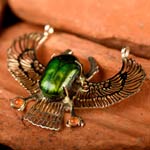
Ankh
The Ankh is a symbolic representation of both Physical and Eternal life. It is known as the original cross, which is a powerful symbol that was first created in Ancient Egypt. Ankh is typically associated with material things such as water, air, sun, as well as with the Gods, who are frequently pictured carrying an Ankh.
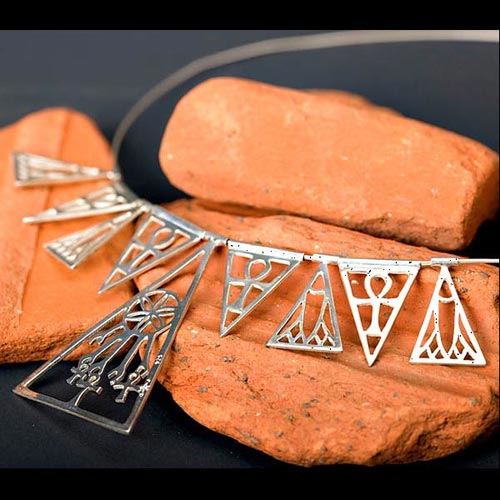
Heart
In Egyptian history, the heart replaced the heart which was removed during mummification. Sometimes assimilated to the Bennu, “Soul of Râ”, it brings the protection of both Osiris and Râ.
Other Egyptian talismans Buckle or Knot of Isis, Djed, Ba, Two Fingers and Udjat or Eye of Horus.
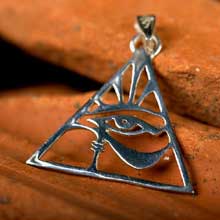
Christian Talismans
The cross: The cross of Christianity was a symbol of the faith. It was previously considered a pagan symbol, with several early church fathers objecting to its use. The cross represents Christ’s victory over death and sin, since it is believed that through His death he conquered death itself.
Fish: The fish’s first known use as a Christian religious symbol was sometime within the first three centuries AD. Christians began using the Greek word for “fish” as an acronym for “Jesus Christ God’s Son, Savior”. Followers of Christianity were called Pisciculi; the root of this Latin word is “fish”.
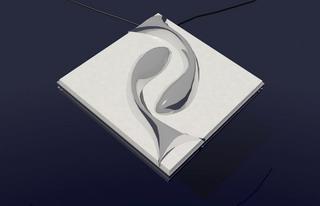
Jewish and Kabbalah Talismans
Star of David: The name David in ancient Hebrew (during the time of King David) is made up of three letters “Dalet”, “Vav” and “Dalet”. The letter Dalet in ancient Hebrew is actually a triangle. King David used the six pointed star as his signature (the two triangles of his name). The middle letter “Vav” means six – The six pointed star. The six-points symbolize that God rules over the universe and protects us from all six directions: North, South, East, West, Up and Down. King David used this symbol in the battlefield on his shield as an omen from God.
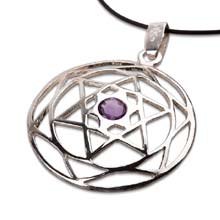
Hamsa: The Hamsa is known as the hand of Miriam or Hamesh hand. The Hamsa serves as an ancient talismanic way of averting the evil eye and providing a “protecting hand” or “Hand of God”. The Hamsa often appears in stylized form, as a hand with three fingers raised, and sometimes with two thumbs arranged symmetrically.
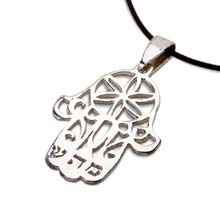
Five metals ring: According to the ancient kabalistic text, the secret of the five metals ring success is that at the specific time of the creation of the ring with these five metals, Jupiter’s influence is summoned forth. Jupiter is the star of development and expansion, and success is at it’s strongest at the specific time of the ring’s creation. The layer on the top of the five metals ring is pure gold. Below it there is a layer of lead and tin, and the last layer is copper, while the ring itself is made out of silver.
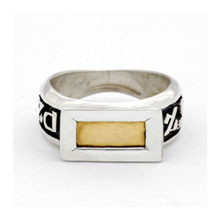
Tree of life: The Tree of Life is one of the most familiar of the Sacred Geometry Symbols. The structure of the Tree of Life is connected to the sacred teachings of the Jewish Kabbalah. The Tree of Life is explained in Sefer Yetzira (“Book of Creation”). The book explains the creation as a process involving the 10 divine numbers (sefirot) of God the Creator and the 22 letters of the Hebrew alphabet. The 10 sefirot together with the 22 letters constitute the “32 paths of secret wisdom”.
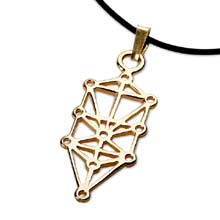
Buddhist Talismans
Buddha: Buddha images provide a reassuring reminder of the basic tenets of Buddhist religion. Just as Buddhist religion is practiced in many different ways, the Buddhist image also serves a wide variety of ritual purposes and has different meanings for different people. Buddha can be invested with a huge amount of information, meaning and implication; they evolve and they are given life. The Buddha image cast in the human form gives it a value presented as calm, still and serene.

Mandalas: The Tibetans create their beautiful Mandalas from colored sand and if you’ll take a metal plate and cover it with sand and make it vibrate with different sounds, you will be able to see different structures that are formed in the sand, that are very similar to the sand Mandalas. In the end, after a few weeks when the Mandalas is finished, they simply wipe the sand off Mandalas to show the non-attachment to the illusion of the external, and also to show the constant change and the process of life and death that takes place in the external world of illusion.
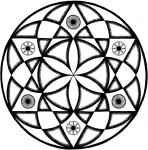
OM: Om (?) is the most sacred syllable in Hinduism, first coming to light in the Vedic Tradition. The syllable is sometimes referred to as the “Udgitha” or “pranava mantra”. The symbol of Om contains three curves, one semicircle and a dot. The large lower curve symbolizes the waking state; the upper curve denotes deep sleep (or the unconscious) state, and the lower curve (which lies between deep sleep and the waking state) signifies the dream state.
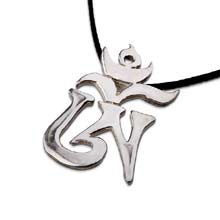
Tibetan Knot: The Tibetan knot (Srivatsa or the endless knot) is one of the eight symbols of the Tibetan Buddhism. The Tibetan knot can stand for karmic consequences: pull here, something happens over there. It is an apt symbol for the Vajrayana methods: Often when we tug at one part of a knot while trying to loosen it, another part becomes tighter. You have to work with the knot to enable it to come undone. In its endless configuration, it evokes the cyclic nature of rebirth and also calls karmic connections to mind.
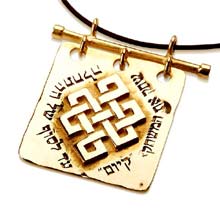
David related work – Talismans jewelry
Article source – Talismans
Written by David Weitzman – Ka Gold Jewelry artist
Images from Ka Gold Jewelry
——————————————————————————————————–
I look forward to your thoughts and comments!
Be sure to Subscribe to this blog either by RSS or Email via the forms on the top right column of the page.
Like this:
Like Loading...
by atmara | Jun 27, 2011 | Art, Mandala Monday, Mandalas, Recommended products
Mandala, which literally means “circle,” refers to the intricate art form stemming from Buddhist and Hindu traditions. Normally, it is made as an intricate religious decoration full of meaningful geometrical elements. Jewelry artist David Weitzman of Ka Gold Jewelry makes the most exquisite Mandala ornaments.
Tibetans, most famous for their Mandala, make these objects using colored sand for long periods of time. Weitzman uses metal but his craftsmanship is inspired heavily by the Tibetan masterpieces. His intricate hand is seen in his Star of David Mandala, featuring complicated twisting of metals and a beautiful gem in the middle
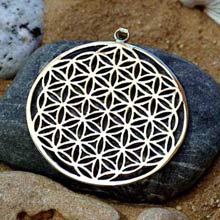
Flower of Life
Another carefully constructed Mandala is the Flower of Life pendant, supposedly used for its healing abilities. Weitzman outdid himself in this large round medallion, complexly made up of 13 spheres that hide universal mathematical and geometric laws. People who wear the Flower of Life report that they experience increased heart beat, prophetic dream, and a new view of reality. The Sri Yantra pendant, meanwhile, features a tangle of nine triangles weaved around a sacred center point. It’s known to provide abundance, beauty and balance.
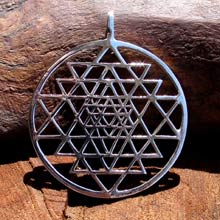
Sri Yantra
These Mandalas prove Weitzman’s unparalleled ability to compose the most intricate and thoughtful jewelry. His passion and innovation truly provides a wonderfully unique and cosmic view of the world.
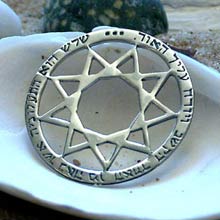
Enneagram
——————————————————————————————————–
David’s work is beautiful. I purchased one of his pendants as a gift for a friend and she wears it often. I would highly recommend you visit his site. – Atmara
——————————————————————————————————–
I look forward to your thoughts and comments!
Be sure to Subscribe to this blog either by RSS or Email via the forms on the top right column of the page.
Like this:
Like Loading...
















